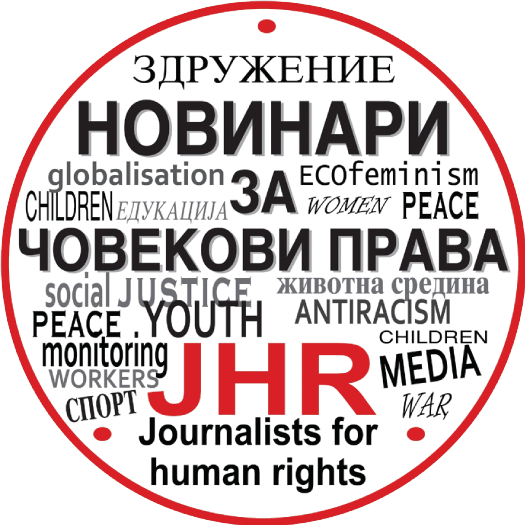Thirty years earlier, the International Conference on Population and Development (ICPD), kept in Cairo, Egypt, highlighted the right of all people to attain the highest requirement of sexual and reproductive health and rights (SRHR). In 2004, WHO released a reproductive health method – validated by 191 Member States at the Fifty-seventh World Health Assembly – that reinforced the midpoint of SRHR to societies and economies (Resolution WHA57.12). These structures are grounded in gender equality and recognize the unvarying significance of sexual health in attaining health for all.
WHO researchers dealt with Member States, civil society and neighborhoods across all regions to operationalize a Global Strategy to cover the 5 essential pillars for improving SRHR:
– enhancing antenatal, perinatal, postpartum and newborn care
– supplying household preparation services
– getting rid of risky abortion
– fighting sexually transferred infections (STIs).
– promoting sexual health.
Resolution WHA57.12 additional informed SRHR policies and assisting files in numerous regions and Member States. For instance, Latin America’s 2013 Montevideo Consensus and Africa’s Maputo Strategy from 2016 (structure upon the original 2006 plan) both include language and ideas enhancing and maintaining SRHR.
” The global method is the foundational policy file that centres WHO’s required for sexual and reproductive health to date,” said Dr Pascale Allotey, Director of the UN Special Programme on Human Reproduction (HRP) and WHO’s Department of Sexual and Reproductive Health. “The text remains essential in contributing to directing research study priorities and dealing with countries to establish beneficial resources to guarantee thorough SRHR across the life course.”
Significant progress has actually been made over the last 20 years within each of the five pillars, consisting of these examples.
– The Global strategy came about as the world was reeling from the HIV and AIDS epidemic. Today, the number of people acquiring HIV has actually fallen by 38% because 2010 alone, due in part to the Strategy’s focus on eliminating STIs consisting of HIV.
– Since March 2022, 60% of WHO Member States have included the human papillomavirus vaccine (HPV) in their routine immunization schedules, significantly advancing efforts to eliminate cervical cancer as a public health risk.
– Prioritizing household preparation services and gain access to led to WHO’s Family planning: an international handbook for service providers referral guide, which has been distributed over a million times. Accordingly, the proportion of women utilizing modern contraceptive approaches increased from 467 million in 1990 to 874 million in 2022, while a larger variety of contraceptive options is now offered.
A 2020 study found that there has been an around the world reduction in unintended pregnancy. Furthermore, evidence-based medical abortion programs have actually improved worldwide access to abortion, and over 60 nations have liberalized abortion laws in the previous thirty years in line with proof on the value of such efforts to ensure the health of women and teen ladies.
Professor Kate Gilmore, co-chair of the Gender and Human Rights Advisory Panel of HRP, credited the Strategy and WHO for helping produce essential scientific proof on SRHR that has added to a few of these shifts. “A few of the excellent advances that we’ve seen – including the method civil society has actually used up the cause to argue for access to safe and legal abortion – are because of the Strategy and the systematic generation of proof over these past 2 decades,” she stated.
Despite early gains, however, current years have actually seen signs of stagnancy. From 2000 to 2020, the maternal death rate visited 34% worldwide – but a 2023 report discovered that progress has mostly stalled since. The worrisome trend was illustrated throughout a current event showcasing global datasets on the evolution of SRHR considering that ICPD. High maternal death rates continue a few nations and sexual health concerns, such as endometriosis, infertility and sexual erectile dysfunction, are frequently overlooked or normalized.
Dr Allotey and Dr Manjulaa Narasimhan, scientist at WHO and HRP, noted in a current commentary in the WHO Bulletin that the SRHR agenda stays unfinished and in some circumstances has actually fallen back due to geopolitical stress, financial recessions, the international food crisis, environment modification, humanitarian crises and COVID-19.
There are emerging opportunities to catalyse progress – for example, by boosting human rights-based techniques in SRHR and embedding principles like non-discrimination, including in crisis circumstances. Improving health systems with a main health-care method can improve equity and expand access to thorough SRHR services. New innovations and alternative service delivery approaches can enhance SRHR by expanding gain access to, choice and autonomy.
Other future-looking focus areas within SRHR include research study on the transformative function of artificial intelligence and ingenious contraception methods, additional deal with strengthening health systems, and the withstanding prioritization of positive pregnancy and giving birth experiences.
At a broader level, Dr Allotey required an ongoing emphasis on the fundamental importance of SRHR. “Sexual and reproductive health ought to never be relegated to the margins of healthcare, but acknowledged as crucial for the overall well-being of individuals and the neighborhoods in which they live,” she said.
WHO researchers dealt with Member States, civil society and neighborhoods across all regions to operationalize a Global Strategy to cover the 5 essential pillars for improving SRHR:
– enhancing antenatal, perinatal, postpartum and newborn care
– supplying household preparation services
– getting rid of risky abortion
– fighting sexually transferred infections (STIs).
– promoting sexual health.
Resolution WHA57.12 additional informed SRHR policies and assisting files in numerous regions and Member States. For instance, Latin America’s 2013 Montevideo Consensus and Africa’s Maputo Strategy from 2016 (structure upon the original 2006 plan) both include language and ideas enhancing and maintaining SRHR.
” The global method is the foundational policy file that centres WHO’s required for sexual and reproductive health to date,” said Dr Pascale Allotey, Director of the UN Special Programme on Human Reproduction (HRP) and WHO’s Department of Sexual and Reproductive Health. “The text remains essential in contributing to directing research study priorities and dealing with countries to establish beneficial resources to guarantee thorough SRHR across the life course.”
Significant progress has actually been made over the last 20 years within each of the five pillars, consisting of these examples.

– The Global strategy came about as the world was reeling from the HIV and AIDS epidemic. Today, the number of people acquiring HIV has actually fallen by 38% because 2010 alone, due in part to the Strategy’s focus on eliminating STIs consisting of HIV.
– Since March 2022, 60% of WHO Member States have included the human papillomavirus vaccine (HPV) in their routine immunization schedules, significantly advancing efforts to eliminate cervical cancer as a public health risk.
– Prioritizing household preparation services and gain access to led to WHO’s Family planning: an international handbook for service providers referral guide, which has been distributed over a million times. Accordingly, the proportion of women utilizing modern contraceptive approaches increased from 467 million in 1990 to 874 million in 2022, while a larger variety of contraceptive options is now offered.
A 2020 study found that there has been an around the world reduction in unintended pregnancy. Furthermore, evidence-based medical abortion programs have actually improved worldwide access to abortion, and over 60 nations have liberalized abortion laws in the previous thirty years in line with proof on the value of such efforts to ensure the health of women and teen ladies.
Professor Kate Gilmore, co-chair of the Gender and Human Rights Advisory Panel of HRP, credited the Strategy and WHO for helping produce essential scientific proof on SRHR that has added to a few of these shifts. “A few of the excellent advances that we’ve seen – including the method civil society has actually used up the cause to argue for access to safe and legal abortion – are because of the Strategy and the systematic generation of proof over these past 2 decades,” she stated.
Despite early gains, however, current years have actually seen signs of stagnancy. From 2000 to 2020, the maternal death rate visited 34% worldwide – but a 2023 report discovered that progress has mostly stalled since. The worrisome trend was illustrated throughout a current event showcasing global datasets on the evolution of SRHR considering that ICPD. High maternal death rates continue a few nations and sexual health concerns, such as endometriosis, infertility and sexual erectile dysfunction, are frequently overlooked or normalized.

Dr Allotey and Dr Manjulaa Narasimhan, scientist at WHO and HRP, noted in a current commentary in the WHO Bulletin that the SRHR agenda stays unfinished and in some circumstances has actually fallen back due to geopolitical stress, financial recessions, the international food crisis, environment modification, humanitarian crises and COVID-19.

There are emerging opportunities to catalyse progress – for example, by boosting human rights-based techniques in SRHR and embedding principles like non-discrimination, including in crisis circumstances. Improving health systems with a main health-care method can improve equity and expand access to thorough SRHR services. New innovations and alternative service delivery approaches can enhance SRHR by expanding gain access to, choice and autonomy.
Other future-looking focus areas within SRHR include research study on the transformative function of artificial intelligence and ingenious contraception methods, additional deal with strengthening health systems, and the withstanding prioritization of positive pregnancy and giving birth experiences.
At a broader level, Dr Allotey required an ongoing emphasis on the fundamental importance of SRHR. “Sexual and reproductive health ought to never be relegated to the margins of healthcare, but acknowledged as crucial for the overall well-being of individuals and the neighborhoods in which they live,” she said.
Please login or Register to submit your answer









